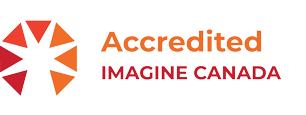By Owen Charters
When I visited our Boys & Girls Club in Cornwall, Ontario about a year ago, I met the after school homework group—teenagers who gathered after school to participate in our RBC Raise the Grade program, which boosts academic skills, increases digital literacy, and explores post-secondary options. I was told I had to stay until they could meet me because they had questions. And they sure did. They were inquisitive, curious, and eager to meet me. And one of their first questions was what do I do?
That gave me pause. I’m used to telling younger kids “Oh, I’m the boss of Boys & Girls Clubs.” That oversimplified explanation usually suffices for the pre-teen set. But for teenagers I needed a more sophisticated response. Their question wasn’t about what my role was; it was about what I do—all day, every day. What things keep me busy?
The quick answer is that I answer emails; at least, that’s sometimes how it feels. But the truth is that their question stuck with me, and led me to examine why I love my job so much.
Again, there is an easy answer—we get to work with kids, empower them, build communities, and all that amazing stuff. And I do love that aspect of the job. But that’s not what I actually do every day. Those are the outcomes of the daily work. What I do every day is different, and although it can sound a bit boring (like email), it really is fascinating—at least for me.
So here are a few things I love about my job.
I like the politics. Not politics like Conservatives or Liberals or working with governments. I mean the politics of working with people. The definition of politics I’m thinking of is the “complexity of relations between people living in society, or the relations or conduct between people within a set organization.” Here’s a good example. Not too long ago I sat with Tom Clift, Vice Chair of our board, and chair of our governance committee. We discussed how the board operates, and how it can operate better. We discussed who to recruit to the board—not the specific individuals, but the backgrounds, experiences, and knowledge we need to make the board more effective and representative of the mission we serve. We talked about the mechanics of the board—how to make meetings more effective, and how to get board members more training and education on governance of nonprofits—and why nonprofits are different to govern than for-profits in some fundamental ways. One of the parts of my job I love is the game, or the puzzle, of how a group works together; in this particular case, the board. The role of governing an organization, yet only getting the chance to meet 6 to 7 times a year to decide on some of the most important and fundamental aspects of our work, is a very difficult one. Working well with a board is rewarding. They are a check and balance. They contribute to plans to make things better, and an empowered board can really elevate the work of an organization.
Another thing I love is “vision.” Especially in North America, we have an expectation that CEOs have a vision, have a distinct way to communicate a vision, and bring people along to realize their vision. We expect that there is some sort of ideal vision that this one person has, and if they’re good, we’ll buy in. One challenge to this idea is that there are many parts to a vision. Where are we going? How will we operate? What sort of culture should we have? It can be difficult to articulate what we mean by vision. Everyone has a nebulous concept of what this vision should be, and it can be really disappointing when the CEO’s vision doesn’t align with our perspective. As a culture, we’re a bit starstruck with the visionary CEO—the Elon Musk or the Steve Jobs who created Tesla, SpaceX, Apple, and Pixar. But if you’ve read much about them, you soon learn that they aren’t great to work for. They might be visionaries, but they can also be tyrants.
The charitable sector—and in fact, almost any organization that is well past the founding, entrepreneurial stage—requires a different type of vision. It requires collaboration. It requires engaging the visions of many stakeholders. I find that the CEO role is a balance between creating a vision and reflecting the vision of everyone who is part of what we do. It’s not my vision—but I have to listen, read, and adapt a collective vision that comes from the voices of our Clubs, our national and regional staff, from our donors and stakeholders, from those that care about the work we do. It’s more like a conductor—I take the many sections of the orchestra and help them work together in one coherent outcome. The vision is what we all want together, so my job is to be the ambassador, the champion of a collective vision. It has to be a vision for all of us.
Both of these exercises—understanding and working with the complexities of group dynamics and decision-making at the board level, and orchestrating the mix of ideas, hopes, and dreams into a coherent unified vision—these are fun parts of my job. It’s exciting to map out how we can be even better. How can the board improve and maybe accomplish more? How can our vision be stretched? How can our horizons be lengthened? How can we dare to dream about doing even more than we do today and do our work better? What could be the scale of our imagination in our work? And then, when we figure out where we want to go, how can we work to achieve our bold ambitions?
Working with others to realize a shared vision—just one of the things I love about this job.

